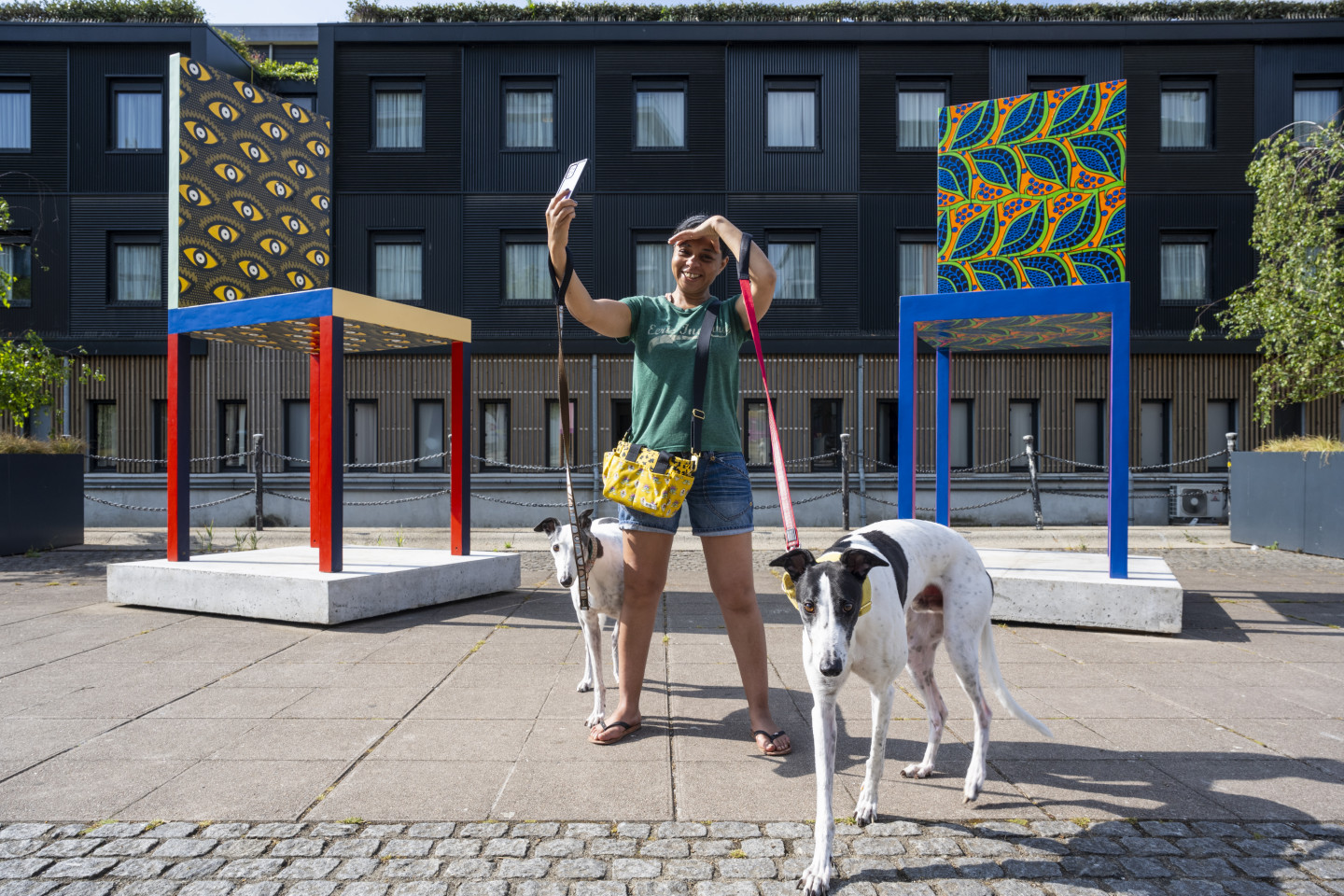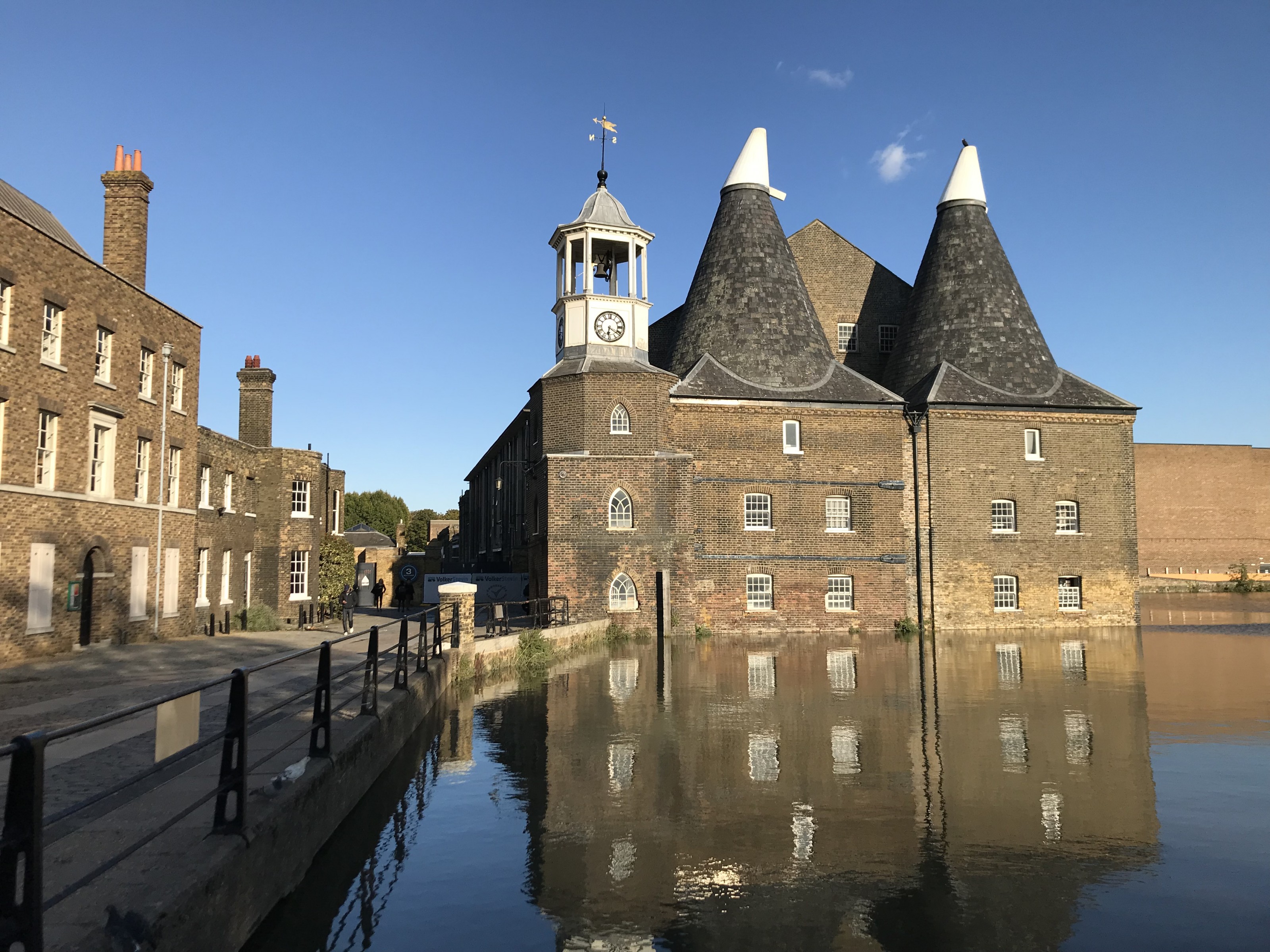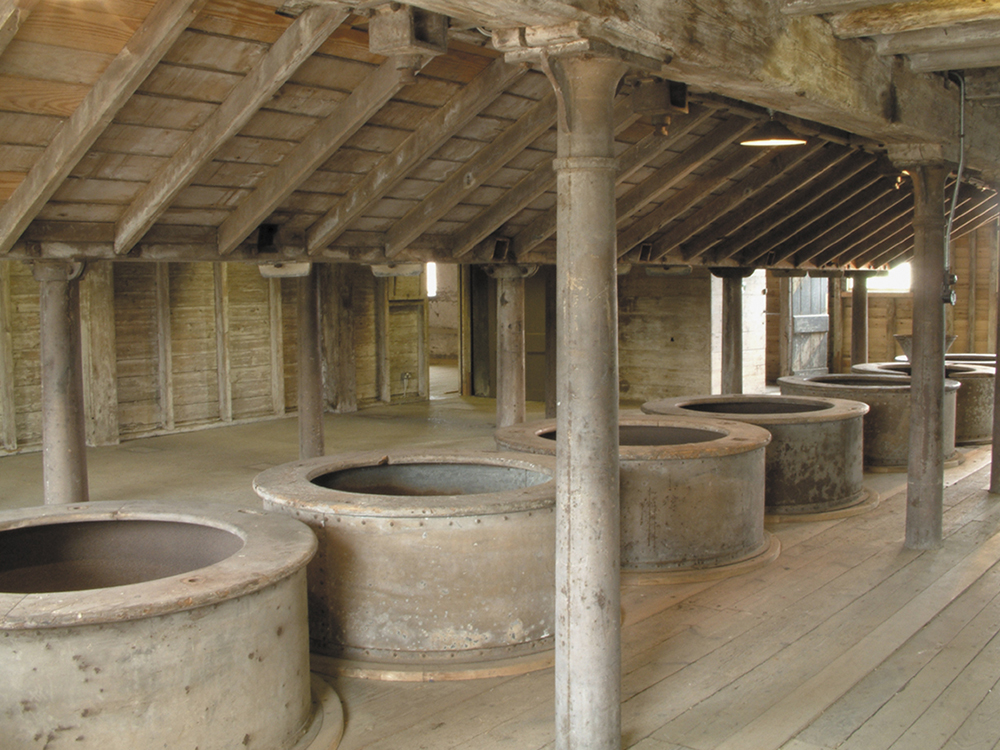Three Mills buildings
The Three Mills Lane cobbled area is listed as Grade I status, and is effectively a bridge. This part of the island is built on iron clad wooden stilts, and is entirely man-made.
The House Mill, also Grade 1 status, is the world’s largest surviving tidal mill.
Its foundations date from between 1380 and 1420, but the Domesday Book shows there were some of Britain’s oldest mills here in 1086. The mills ground flour and supplied the bakers of Stratford, who sold their bread in the City of London.
In 1727 flour manufacturer Peter Lefevre bought the Three Mills site and went into partnership with a number of men including Daniel Bisson. They built a large gin distillery, which used the grain ground in the mills. The House Mill that we see today was built in 1776 by Daniel Bisson. The spirit distilled here supplied the gin palaces of London’s gin craze and even the Royal Navy.
Adjacent to the House Mill, the Clock Mill was built in 1817 by then owner (and Tory MP) Peter Metcalfe. The clock tower, bell and clock face are part of a previous timber mill dating back to 1750. Next to the clock tower stand two kilns, which were used for drying grain. The kiln’s revolving cowls (chimney coverings) allowed warm air to escape and give their distinctive shape.
In 1872 J&W Nicholson & Co acquired the distillery and produced the popular ‘Lamplighter Gin’.
After sustaining bomb damage in WW2 the House Mill ceased milling, and the Clock Mill followed suit in 1952.
In the late 1970s the House Mill was saved from proposed demolition and the House Mill Trust was established. The fabric of the building has been restored and eventually the machinery will be restored to working order too. This will remind us of the historic age of milling and also produce hydro-electricity.
House Mill is run by volunteers and is regularly open for guided tours and a range of events and exhibitions. The adjoining contemporary Miller’s House was constructed in the 1990s and is used as a cafe, visitor and education centre.
Next to the Miller’s House is the original Custom House, which was designed with a beautiful, but functional bow window. The Excise Officers would be able to see from this window the passage of the grain, the raw alchol and the finished bottled product as it made its way around the island. They would ensure that accurate records recorded all activity for Excise purposes.
The other buildings which would have housed the distillery itself are now owned separately and operate as the busy 3 Mills Film Studios.
Image credits:
1. The House and Clock Mills © Charlotte Booth
2. Empty tuns for the Fairbairn style grinding stones in the House Mill © The House Mill Trust
Supported by



